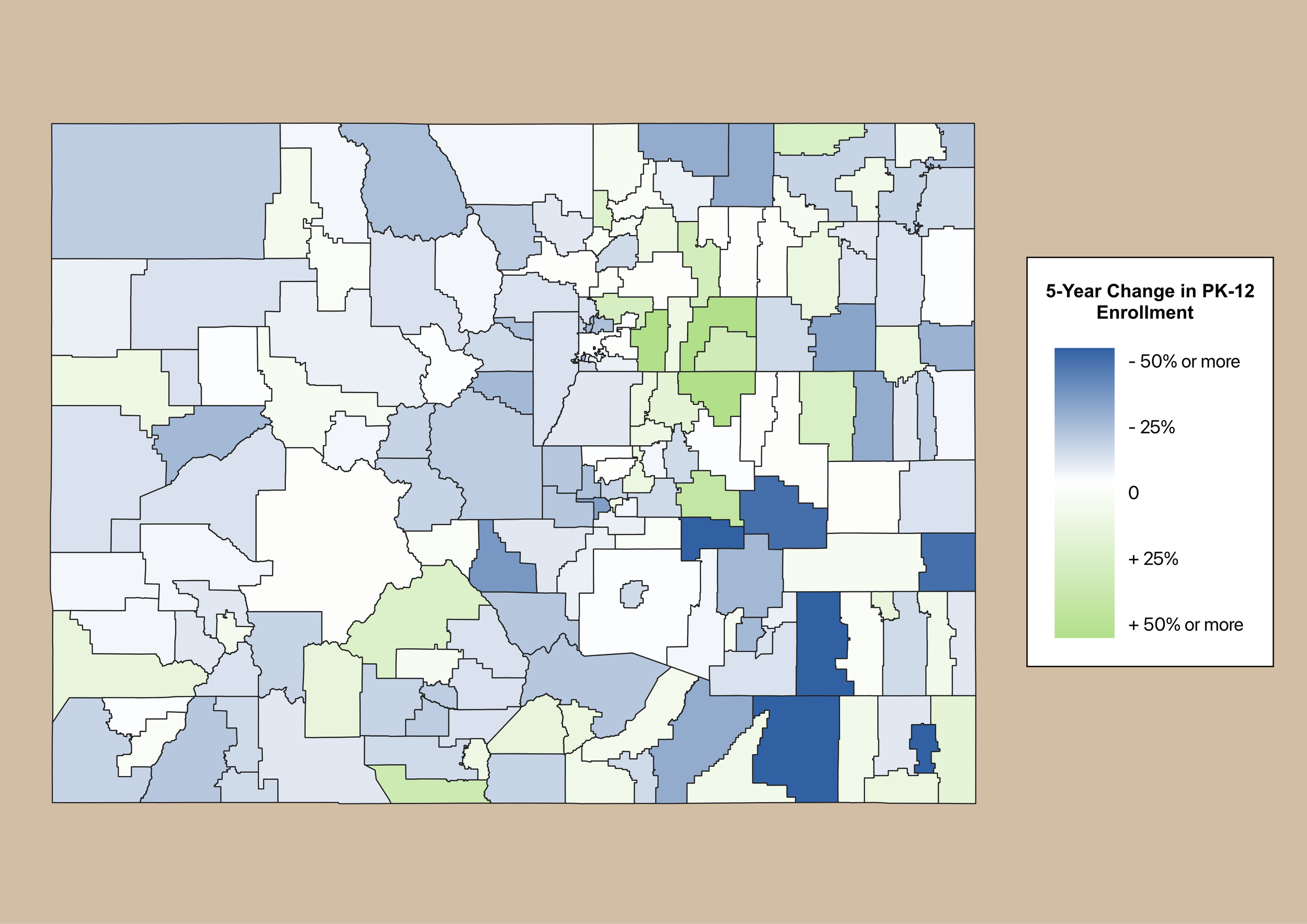Navigating the Future: How District Leaders Can Respond to Ongoing Enrollment Declines
Nationwide, 65% of school districts have experienced declining enrollment since the 2019-20 school year. Changes in enrollment will impact funding, school closures and openings, staffing, facilities planning, transportation, and the role schools play in communities as the proportion of households with children declines. Below we will provide key facts policymakers and education leaders need to know about enrollment declines, followed by suggested responses and resources based on our experience supporting and leading districts.
Key facts about enrollment declines:
Enrollment changes are not a uniform phenomenon. Enrollment changes vary both across states and within states; while most states have seen consistent declines across districts, others face more variation in the proportion of districts that are experiencing a decline. For example, in West Virginia, 95% of districts are facing declining enrollment, illustrated by the statewide 6% decline in student enrollment, while Texas, with 54% of districts facing declining enrollment, faces a more complicated context, illustrated by their 1% increase in enrollment statewide. These uneven patterns require states to build flexibility into their funding and policy systems, and demand locally responsive planning.
Visualizing Uneven Changes in Enrollment: 5-Year Public School Enrollment Change for Colorado Districts
The map above illustrates how PK–12 enrollment shifts can vary widely within a single state. Between the 2019–20 and 2024–25 school years, Colorado’s public school enrollment declined by more than 32,000 students (3.5%). Even with this overall decrease, district-level patterns were nearly evenly split: 51% of districts increased or maintained their enrollment, while 49% experienced declines.
Enrollment declines are driven by three main factors:
Declines in birthrates
Increases in home-schooling
Increases in private school enrollment
Changes in birthrates are the most influential factors contributing to declining student enrollment. Birthrates have been dropping for over a century, except for the post-war baby boom. Birthrates significantly dipped during the great recession (2007-2009), and though there was some rebound after, it was not large enough to make up for the overall decline. Despite previous variation in birthrate declines among different races, ethnicities, and income levels, the decline has become much more universal. As a result, fewer students have entered the K-12 system, the impacts of which are now being seen in high schools and soon will be felt in post-secondary institutions.
These enrollment declines are expected to continue through at least 2035. Though declines may slow between 2035 and 2045, they are expected to resume after 2045. This is based solely upon birthrate data, not considering recent homeschooling and private school attendance increases, which may further contribute to public school enrollment declines.
What can district leaders do now:
While responding to changes in enrollment might require action at the state level (read more about APA’s recommendations for state leaders here), district leaders can begin by adopting the following strategies APA has recommended to clients facing similar challenges.
Regularly communicate with community members about changes in enrollment. This may include investing in enrollment forecasting.
Examples may include annual enrollment updates through town halls, regular newsletters, and Board presentations to ensure unified understanding across the district.
Develop flexible policies around school closures and consolidation to prepare the community for the impacts of declining enrollment.
Include factors to be considered when closing or opening schools, such as minimum availability of specials (e.g. music, art and PE) for elementary schools and minimum variety of coursework and electives in secondary schools, efficiency, student needs, and forecasted enrollment for upcoming years.
Develop alternatives to changes in enrollment beyond closure or new schools, such as consolidation and changes in grade levels served in a school.
Develop plans for how to address reduced staffing needs, such as hiring freezes, different uses of contractors, and mixed grade classes.
Create policies for use of surplus schools or land.
Develop or revise long-term capital investment plans to prepare for changes in building usage and transportation infrastructure needs to include investments in:
School consolidation
Evolving building usage, including changes in grade configurations such as moving from an elementary school to a K-8, or consolidating middle and high school.
Increased transportation capacity to address the possible decrease in the number of schools
APA is available to support districts in navigating a wide range of challenges, from enrollment forecasting and community engagement to school closures, staffing shifts, policy development, and capital planning. Get in touch here - and in the meantime, follow us on LinkedIn for more.
Point of Contact
Robert Reichardt, PhD, is a Senior Associate at APA with over 25 years of experience in education policy and program improvement. He blends deep expertise in evaluation and policy analysis with a commitment to equity and public service through his roles in local government and education leadership.
Dr. Reichardt can be reached via email at rer@apaconsulting.net.




